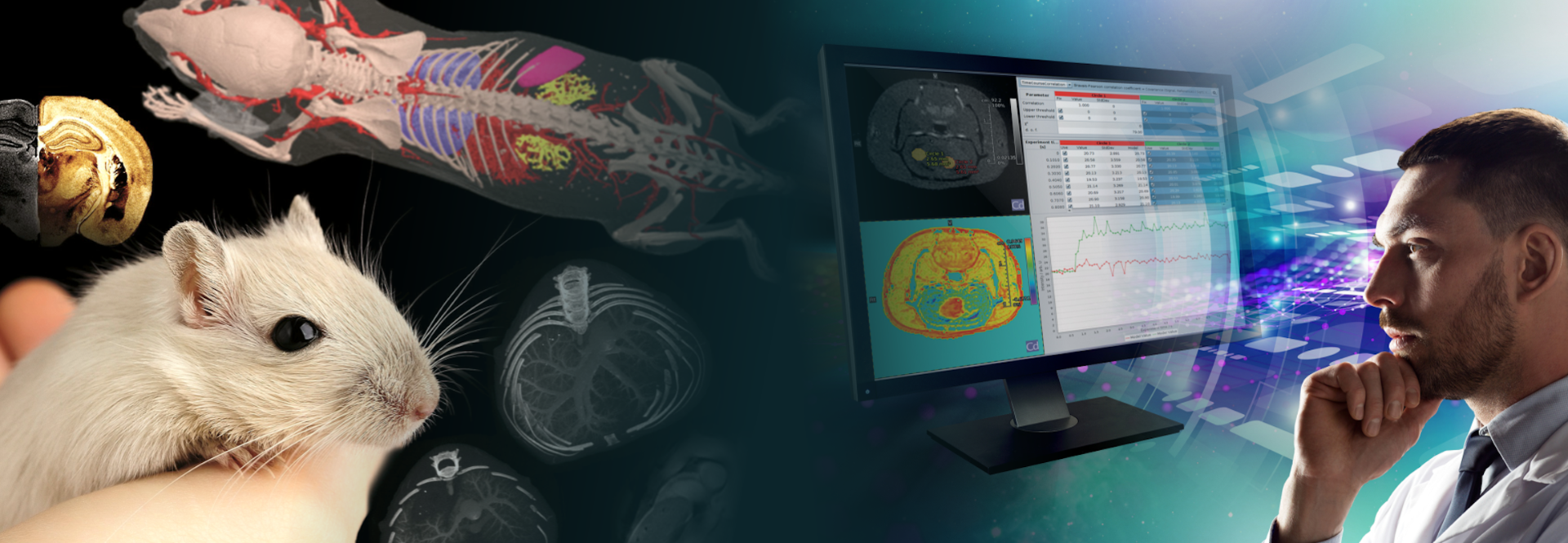

Bruker ISMRM Scientific Workshop On Demand
Overview
The ISMRM had to go virtual once more in 2021. This gave us the opportunity to turn the Bruker User Meeting into an interactive Scientific Workshop that allowed knowledge sharing within the MRI community. Watch now the recording on-demand.
Speakers
On-demand - An Exploration of Metabolic Imaging
Arend Heerschap
Arend Heerschap starts his talk with a lookback to the early days of in vivo NMR spectroscopy around 1985. He then discusses the future directions of spectroscopy such as fingerprinting, CEST, and dynamic MRS with isotopic labels such as deuterium 2H. He details water extraction methods that circumvent the disadvantages of water suppression. He then shows exciting results of human muscle metabolism via dynamic 31P MRS as well as dynamic MRS in mouse brain after 13C glucose infusion and the glucose to lactate conversion and use of it to differentiate tumors via the Warburg effect.
Greg Stanisz
Greg Stanisz emphasizes the importance of metabolic imaging for identifying tissue state, monitoring and predicting treatment response. He then discusses his spectroscopic work on the effect of gut microbiome on brain metabolism on a mouse diet induced anxiety model. He also investigates metabolism of cancer models via CEST. He uses this to predict tumor treatment success only one week after treatment. He concludes his talk with concise comparison of spectroscopy, CEST, and hyperpolarization.
Marty Pagel
Marty Pagel provides recommendations for a successful CEST experiment, including taking animal motion and physiology stability into account, as well as tips for respiratory gating, optimization of saturation times and powers, and number of frequency values. He also suggests B0 and B1 mapping. He makes a strong case for considering analysis before scanning to ensure that full sets of scans will fulfill the analysis method requirements. He then shows applications such as the Warburg effect in tumor microenvironment via CEST pH measurements, before demonstrating GlucoCEST results and discussing what this truly represents.
Kayvan Keshari
Kayvan Keshari begins his talk with a brief introduction to hyperpolarization before moving into his research using 13C DHA, the oxidated form of vitamin C, to probe changes in redox, which are altered in a large range of diseases and his specific work on diabetes. He also shows exciting developments to increase sensitivity even further using micro-coils as well as multi-shot hyperpolarization, before concluding with clinical applications using hyperpolarized pyruvate.
On-demand - Structure and Function of The Brain
Klaus Scheffler
Klaus Scheffler provides an overview of the different levels of structural and functional organization of the brain and which imaging modalities cover which levels at which resolutions, demonstrating that higher field MRIs can probe finer levels of structural and temporal organization. He then shows a great range of functional studies with resolutions below 15 µm and anatomical studies with resolutions below 40 µm at 14.1 T, including research from Alzheimer, to line-scan and concurrent optical and fMRI, to wood samples from 3rd century military ships.
Hao Huang
Hao Huang begins his talk with an overview of the dimensions of mouse, macaque, and human brains and a demonstration of how high magnetic fields make similar resolutions possible at all animal models. He then discusses his macaque brain atlas with can be found at www.brainmrimap.org, before detailing FA, white and gray matter maps, and mean kurtosis of developing brains of multiple species from mouse to man.
Seong-Gi Kim
Seong-Gi Kim, who makes use of both a BioSpec 9.4 T and a BioSpec 15.2 T, details his fMRI work, expanding on anesthesia considerations, comparing the two field strengths, and sharing exciting discoveries made possible at with the BioSpec 15.2 T. These focus on studies of excitatory vs inhibitory neurons including those on cortex-less knockout models, due to the fact that excitatory neurons are assumed to dominate in the cortex as well as studies demonstrating detection of information flow with forepaw vs optogenetic stimulations.
Joanes Grandjean
Joanes Grandjean discusses the necessity for standardization in fMRI, starting out by referring to a study that shows 240 ways to preform fMRI, that clearly demonstrates this need. After his successfully published mouse multi-center study, he in this talk, describes his current resting state rat multi-center study comprising 50 rat fMRI datasets at 5 different field strengths. He concludes with a comparison of highest specificity in respect to field strength, gradient vs spin echo, and anesthesia.
MRI Award 2021
Join us and congratulate our MRI Award Winners 2021
1st place: Dasiy Villano - Institute of Biostructures and Bioimaging, Torino, Italy
2nd place: David Schaefer - University of Pittsburgh, USA
3rd place: Daniele Bertoglio - Molecular Imaging Center Antwerpen, University of Antwerpen, Belgium